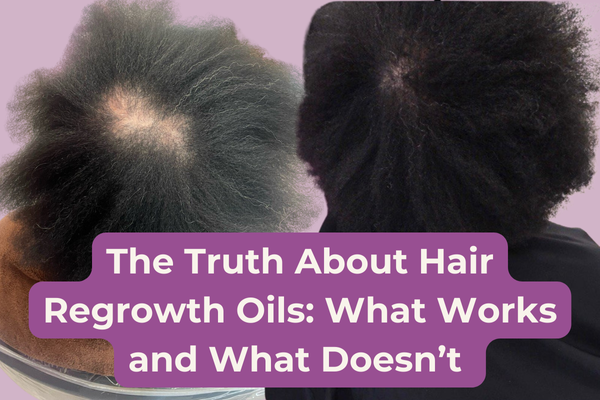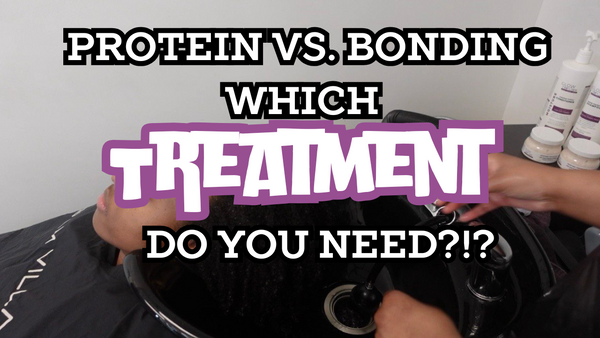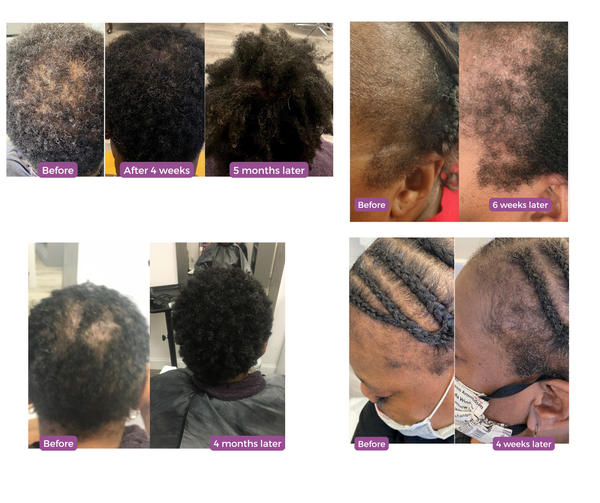How to Pick the Right Conditioner: A beginner's guide.

Today, we are going to break the curse of “product junkism”. We are going to talk about the things you should look out for when selecting your next conditioning treatment.
Finding the perfect conditioner for curly hair can be a bit difficult. Especially when you factor the tons of advertisements coming at us, misinformed industry trends, restrictive hair typing, and what your friends / the latest curly-girl sensation is using….
In this stripped-down guide, we are going to cut out all the noise, and uncover what you need to keep in mind when selecting the perfect conditioner for your next hair wash day.
So, “what is a conditioner, exactly?”
con·di·tion·er /kənˈdiSH(ə)nər (noun) - a substance or appliance used to improve or maintain something's condition; a liquid applied to the hair after shampooing to improve its condition.
Hair conditioner is a product created to improve the quality, feel and pliability of hair. Think of fabric softener, a conditioning agent created to do the aforementioned for clothes and fabrics. Fabric softener also helps to reduce the friction and impact of rubbing between threads. It brings a softness and smoothness to the fabric as to not reduce the garments standing quality. Your hair conditioner, at minimum should be doing the same thing for your hair strands.
Deep conditioning treatments are generally formulated with higher concentrations of hygroscopic (water-attracting) and emollient (water-sealing) ingredients. Traditionally, deep conditioning treatments will generally feel thicker, and will require longer times to process (about 20-30 mins without a heat source). It is also important to understand that most deep conditioning treatments are formulated to continue “working” days after its initial application.
Now that we covered what a conditioner is, lets go into how to pick your next one out.
Here are some key considerations when selecting your next deep conditioner….
1. Ask yourself, “what is the current condition of my hair shaft ?
The state and condition of your hair should help to inform you on the “type” of conditioning treatment one should select and/or the type of ingredients one should look for when selecting a deep conditioner.
- Is your hair dry? Moisturizing/Hydrating conditioning treatments are formulated to promote substantial increase of moisture, smoothness and shine to the hair. Try: Joico’s Moisture Recovery Conditioner
- Does your hair feel weak? Strengthening/ Restorative/ Repairing deep conditioning treatments are generally formulated to fortify and restore weak strands. Try: Kerastase Paris’ Resistance Conditioning Treatment
- Not sure, but know that your hair needs something? Balancing deep conditioning treatments are made to be a bit of both strength and moisture - being safe for everyday use. Try: Amika Soulfood Nourishing Mask
- Hair feels frizzy and needs help with holding onto moisture? Smoothing deep treatments are made to support porous hair and will help to create a seal on the cuticle. Try: Kevin Murphy’s Smooth Again Rinse
2. Ask yourself “What is the current condition of my hair ends?”
Should we consider our hair ends separate to the rest of our hair when evaluating our hair needs?
Our (short) answer is YES…
Often times, our goal is to get to longer hair ->
To get to longer hair, we need to retain the hair growing from our scalp ; thereby making our hair ends the most critical part of the hair strand. It’s the first and most general point to weaken and suffer with hair breakage. With that, its safe to assume that if we intentionally take care and maintain our hair ends then we will see an increase in length retention.
When in doubt and unable to find a conditioning treatment that can help to treat your hair ends and shaft in one step, select the conditioner that will help and support maintenance of your hair ends first.
3. Scan for Ingredients (and pick the best that is suitable for your needs).
This is the most important step. The ingredients in the conditioner you are considering should be those that have been proven to help and not harm hair.
Presently, we’ve observed that most of the natural hair community is suffering from dehydration and dry hair. We all need water – its absolute – and this is why it should be the first ingredient in any conditioner formulation.
What you will notice as you continue your hair journey, is that ingredients listed on product labels are in respective order, from most observed to least observed in the formulation of the product. Easier said, ‘the higher the ingredient is in the list, the more it has in that product." Next time you pick up a conditioning treatment, check to see if water is the first ingredient before buying.
4. Have you used the conditioner? Is it doing what it said on the label?
Look at your hair. Feel it. How does your hair feel after use of the product? Before rinsing out a treatment, look at your hair and see if the product was absorbed into the hair. How much of the product is now left on the surface of the strand?
Quick pro tip: moisturizing and penetrative treatments should leave less on the outside of the strand in comparison to a smoothing/sealing deep conditioning treatments.
5. Make it effective and add a heat source.
Add a heat source to create an environment to allow for maximum efficacy of the product you select.




